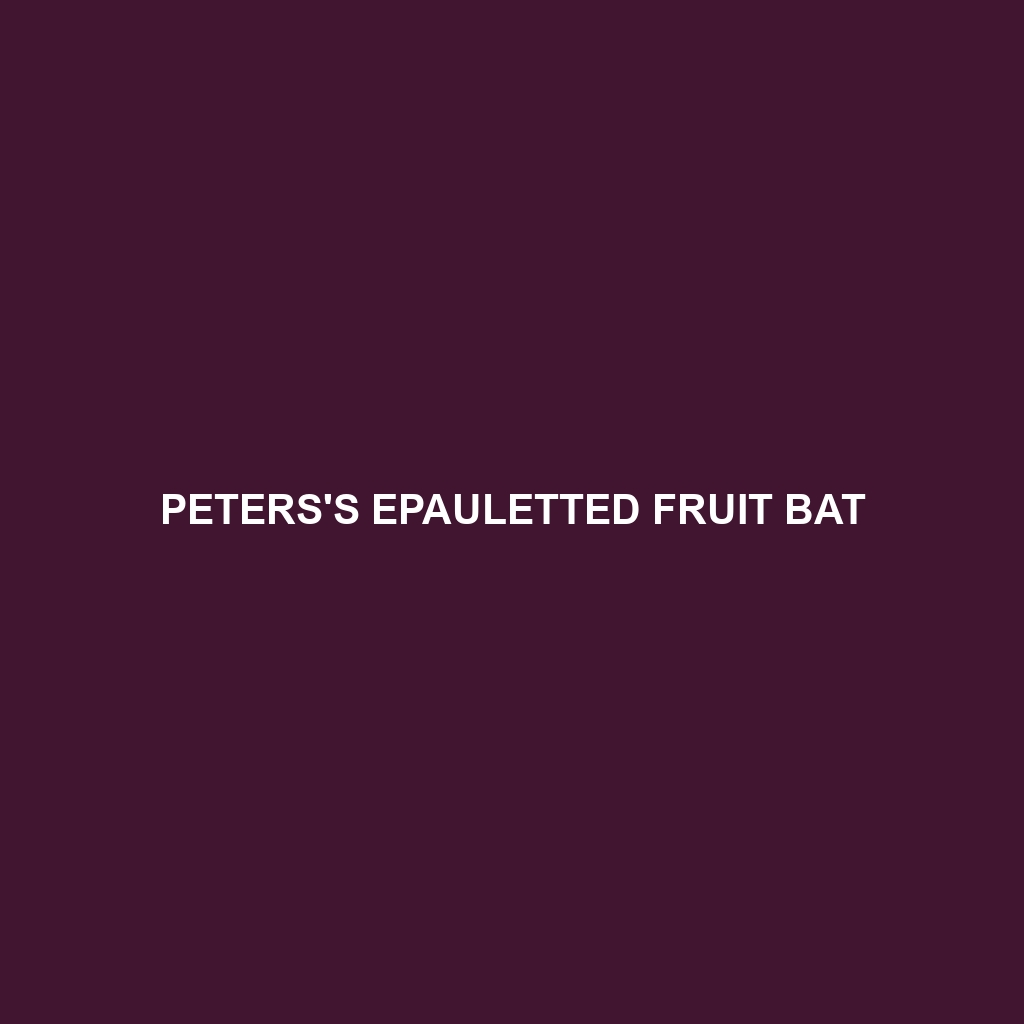Peters’s Epauletted Fruit Bat
Common Name: Peters’s Epauletted Fruit Bat
Scientific Name: Micropteropus pusillus
Habitat: The Peters’s Epauletted Fruit Bat is primarily found in the tropical and subtropical regions of Central and West Africa. This bat species thrives in a variety of environments, including moist forest areas, mangroves, and woodlands. They are commonly spotted in countries such as Cameroon, Nigeria, and the Republic of the Congo, where dense canopies provide shelter and ample food sources.
Physical Characteristics: Peters’s Epauletted Fruit Bats are medium-sized bats, typically ranging from 9 to 12 cm in body length. They possess distinctive ear shapes that are relatively large and rounded. Their fur is generally soft, varying from a dark brown to a lighter chestnut color. The species is notable for its unique yellowish-orange epaulette markings on the shoulders, which are a defining characteristic. These features, combined with their wingspan of about 30 cm, contribute to their intriguing appearance.
Behavior: Peters’s Epauletted Fruit Bats are nocturnal creatures, becoming active at dusk as they forage for food. They are known for their social nature, often roosting in colonies that can number in the hundreds. Their flight is characterized by slow, gliding movements, which aids in their foraging tactics. Vocal communications are common, particularly during breeding seasons or when establishing territory.
Diet: This fruit bat primarily feeds on a variety of fruits, including figs, berries, and other soft, fleshy fruits. Their diet plays a crucial role in seed dispersal, making them an important component of their ecosystem. Peters’s Epauletted Fruit Bats are also known to consume nectar and pollen, which showcases their versatility in feeding habits.
Reproduction: The reproductive cycle of Peters’s Epauletted Fruit Bats typically occurs during the wet season, which coincides with increased food availability. Female bats usually give birth to a single pup after a gestation period of about 2 to 3 months. After birth, mothers are highly protective, carrying their young while foraging and returning to the roost frequently to nurse.
Conservation Status: As of the latest assessments, Peters’s Epauletted Fruit Bat has been classified as **Vulnerable** due to habitat loss and hunting pressures. Deforestation and urbanization threaten their natural habitats, while hunting for bushmeat poses additional risks to their populations.
Interesting Facts: Peters’s Epauletted Fruit Bats are known for their remarkable ability to fly silently. This adaptation helps them avoid predators while foraging. Additionally, they play a pivotal role in pollination, assisting in the reproductive cycles of various plants and trees.
Role in Ecosystem: The Peters’s Epauletted Fruit Bat is an essential species within its ecosystem, contributing significantly to seed dispersal and pollination. By feeding on fruits and nectar, they help maintain the health and diversity of forest environments. Their presence indirectly supports a wide range of other wildlife, as many species rely on the fruits and plants they help propagate.
